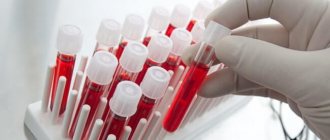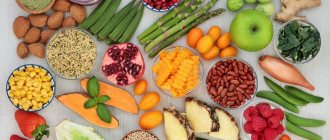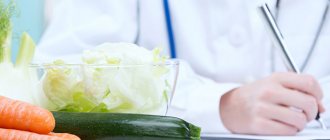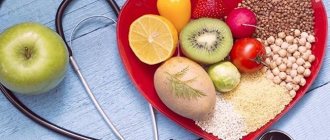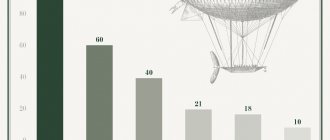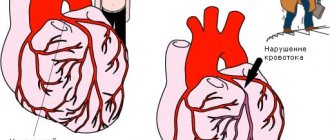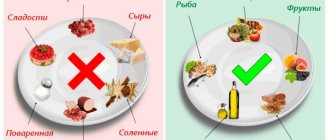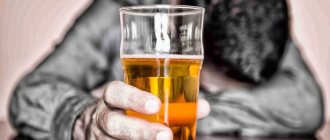Find out more
( 2 ratings, average: 5.00 out of 5)
The diagnosis of atherosclerosis requires a mandatory revision of the daily menu, limitation or even complete rejection of a number of foods and drinks and the introduction of healthy foods into the diet. Such measures are necessary because the occurrence of the disease is directly related to certain unhealthy eating habits. Along with smoking, a sedentary lifestyle and stress, poor nutrition becomes a factor that aggravates the condition of a patient suffering from atherosclerosis. If adequate comprehensive measures are not taken, health becomes increasingly deteriorating and even an unfavorable outcome is possible.
Proper nutrition for atherosclerosis
A completely insufficient measure is a balanced menu, with the inclusion of foods with a certain ratio of vital components - microelements, vitamins, carbohydrates and proteins. Of course, such a menu will bring positive results. But the main task for patients with atherosclerosis is to strictly calculate the calorie content of the daily diet and follow the calorie standards established for their group. Calorie content is determined based on the following parameters:
- patient weight;
- age;
- Lifestyle;
- professional activity taking into account physical activity (the nature of the work performed and its intensity).
Considering that atherosclerosis is one of the main causes of death in people all over the world, you should carefully follow the recommendations of your doctor and nutritionists.
Diet for vascular atherosclerosis. Basic Rules
Following dietary and lifestyle recommendations is not at all as difficult a task as it might seem at first glance. The patient is required to have discipline and awareness of the importance of following the instructions necessary to maintain health, improve the quality of life in general and further have a positive prognosis. On the subject: How not to eat after 6 pm Doctors' orders include:
- Refusal from meat broths, fatty, salty and smoked foods and semi-finished products and replacing them with healthy dishes (stewed, boiled and baked).
- Regular meals (small portions) – four or more times a day.
- A balanced menu with optimal content of micro- and macroelements, carbohydrates and proteins.
- Limiting table salt.
- Hot spices/condiments are prohibited.
- Including a sufficient amount of fiber-rich foods in the menu.
- Lots of fresh vegetables and fruits.
- Consumption of low-fat dairy products (in doses indicated by a nutritionist).
If you are overweight, patients are required, under the supervision of specialists, to take measures to lose weight by practicing fasting days. Homemade weight loss and dietary nutrition without consulting a specialist is prohibited! Illiterate actions cause harm to the body. On the recommendation of a doctor, it is necessary to completely avoid or significantly limit the following products:
- sugar;
- candies and various sweets;
- mayonnaise;
- store-bought sauces;
- ketchup;
- bakery products made from wheat (white) flour;
- offal;
- red meat;
- sweet carbonated drinks;
- store-bought juices/nectars;
- cocoa;
- canned fish and meat;
- dried fruits (high in sugars);
- strong coffee and tea.
Preference should be given to foods with a low hypoglycemic index.
Reviews and results
This diet is designed to last for a long time, as it is balanced and contains a variety of foods. Some restriction in carbohydrates and fats does not adversely affect health, but on the contrary allows you to lose weight, normalize cholesterol and feel good. All these points are noted in the reviews of patients.
- “...I improved my health and lost weight. I liked this healthy diet. True, I was also prescribed pills to lower cholesterol”;
- “... I’m happy with the results: cholesterol has decreased, sugar has normalized, and I’ve even lost weight. Beauty!";
- “...Cholesterol was not very high, so I managed only with therapeutic nutrition. I continue to eat like this”;
- “... My result is minus 5 kg, my general condition has improved significantly and my tests have become normal”;
- “... Helped me lose weight and improve my condition, but I think that the tests became normal thanks to the pills. I won’t push myself further and will eat right.”
- “... This is not even a diet, but proper nutrition. I see only benefits in low-fat dishes without frying or batter. I eat constantly, even though no one prescribed it for me. Cholesterol is normal."
Nutritionist's recommendations
- The main diet should consist of high-density lipoproteins with a sufficient amount of digestible vitamins.
- Food is cooked mainly by steaming without the use of fat. Vegetable oil is used for dressing salads and other dishes.
- When cooking broth from lean meat, the cooled fat is skimmed off the surface.
- Fried foods, as well as canned foods and pickles, including home-made and factory-made canned meat and fish, are completely excluded.
- Smoked products are prohibited.
- There is no need to add salt during the cooking process. Table salt is used in small quantities when serving the dish.
- For home baking, use chicken protein, not yolk.
- The daily diet is five meals a day. This technique allows you to avoid overeating and minimize the feeling of hunger between meals.
Find out the causes of excess weight and ways to quickly lose weight
Sign up for a free initial appointment with a nutritionist!
The daily menu of a patient with atherosclerosis consists mainly of protein foods:
- lean meat;
- low-fat cottage cheese;
- fish.
Important! The volume of each of the above products is about 150 grams (daily).
What do protein-rich foods do?
With their help, you can create a long-lasting feeling of fullness. The human body takes longer to process such products. Therefore, repeated meals after a short period of time are not required.
Plant sterols in the diet of patients with atherosclerosis
Sterols are components that are contained in:
- in natural vegetable oils;
- in nuts;
- in legumes;
- in cereals.
Thanks to sterols, excess cholesterol is not absorbed into the bloodstream. Thus, foods high in sterols become part of a comprehensive program for the management of patients with vascular atherosclerosis. The daily norm of sterols is about two grams.
Advantages and disadvantages
| pros | Minuses |
|
|
Diet for different types of illness
Atherosclerosis is a disease that affects various organs, from the brain to the lower extremities. Despite the fact that the disease is classified as one pathology, the approach to treating the patient and the selection of food products is an individual task.
Diet for atherosclerosis of the vessels of the lower extremities
When diagnosing this type of disease, you should stop smoking and alcohol, increase physical activity and review your diet. It is necessary to undergo comprehensive examinations of the body in order to identify possible concomitant diseases and obtain advice from specialists. On the subject: How to control appetite The goal of the diet is to reduce cholesterol levels in the blood. Improve blood composition. Properly selected food products can replace fatty acids that are harmful to the body with beneficial unsaturated acids. The following products are recommended:
- rich in vegetable protein (legumes, corn, wheat, soy);
- bran;
- seasonal berries;
- fruits;
- a variety of vegetables;
- sea fish (steamed or baked);
- milk, kefir and cottage cheese (with low fat content);
- compote of dried apples, pears, dried apricots, etc.
Weak tea and coffee, lean meat (boiled, baked, stewed) are allowed.
Diet for cerebral atherosclerosis
The list of permitted products is quite long. It includes:
- Milk, cottage cheese, kefir.
- Green and black tea.
- Natural coffee (instant or brewed).
- Fresh (not packaged) juice (berry, fruit and vegetable).
- Rose hip decoction.
- Bran.
- Bakery products (1st and 2nd grade wheat and rye flour).
- Biscuits without synthetic additives (dyes, flavor enhancers, etc. are prohibited).
- Baked goods (no salt, no sweet buns).
- First courses (lenten, not with meat broth) - beetroot soups, vegetable soups, cereals, borscht without meat in water, etc.
- Sea products.
- Butter (butter to add to the dish before serving, various vegetable oils).
- Chicken eggs (soft-boiled) and omelettes (no more than three per week).
- Greens and a variety of vegetables.
- Porridge and casserole made from cereals - oats, millet, buckwheat.
- Rice (not much).
- Pasta (limited).
- Jam, marmalade (small quantity).
- Natural honey (not a lot).
- Sugar (doses are strictly controlled).
- Desserts (unsweetened, natural jelly or mousse).
General recommendations: limit your salt intake, replace animal fat with vegetable oil.
Do cholesterol-lowering medications help?
A large number of pharmaceutical products designed to lower cholesterol have no effect. To normalize cholesterol, it is enough to follow the rules of nutrition, give up bad habits and lead an active lifestyle. Include in your menu dishes rich in vitamins (especially ascorbic acid and Vitamin B and P). Food should be prepared without table salt, adding it in minimal quantities to ready-made dishes. The norm is no more than 3-5 grams per day.
Fully or partially limited products
Products made from puff pastry and butter dough, meat, fish, and mushroom broths are completely excluded. You cannot eat fatty pork, cooking fats, duck, goose, kidneys, brains, liver, sausages, canned food and all kinds of smoked meats.
Fatty fish, canned fish and caviar, salted and smoked fish are prohibited. Do not eat fatty cheese and cream, cottage cheese and sour cream. The consumption of radishes, radishes, sorrel, spinach and mushrooms is prohibited. Chocolate, ice cream, and products with cream are not allowed. As for sauces, you should not use meat, fish, mushroom, or mustard. Strong tea and coffee, cocoa are prohibited.
Limit egg yolks, rice, semolina and pasta, mayonnaise, horseradish. For obesity - grapes, sugar, honey, raisins, jam are allowed rarely and in minimal quantities.
Table of prohibited products
| Proteins, g | Fats, g | Carbohydrates, g | Calories, kcal | |
Vegetables and greens | ||||
| radish | 1,2 | 0,1 | 3,4 | 19 |
| white radish | 1,4 | 0,0 | 4,1 | 21 |
| red radish | 1,2 | 0,1 | 3,4 | 20 |
| black radish | 1,9 | 0,2 | 6,7 | 35 |
| spinach | 2,9 | 0,3 | 2,0 | 22 |
| sorrel | 1,5 | 0,3 | 2,9 | 19 |
Fruits | ||||
| bananas | 1,5 | 0,2 | 21,8 | 95 |
Berries | ||||
| grape | 0,6 | 0,2 | 16,8 | 65 |
Mushrooms | ||||
| mushrooms | 3,5 | 2,0 | 2,5 | 30 |
Nuts and dried fruits | ||||
| raisin | 2,9 | 0,6 | 66,0 | 264 |
Cereals and porridges | ||||
| semolina | 10,3 | 1,0 | 73,3 | 328 |
| rice | 6,7 | 0,7 | 78,9 | 344 |
Flour and pasta | ||||
| pasta | 10,4 | 1,1 | 69,7 | 337 |
Confectionery | ||||
| jam | 0,3 | 0,2 | 63,0 | 263 |
| jam | 0,3 | 0,1 | 56,0 | 238 |
| candies | 4,3 | 19,8 | 67,5 | 453 |
| pastry cream | 0,2 | 26,0 | 16,5 | 300 |
| cookie | 7,5 | 11,8 | 74,9 | 417 |
Ice cream | ||||
| ice cream | 3,7 | 6,9 | 22,1 | 189 |
Cakes | ||||
| cake | 4,4 | 23,4 | 45,2 | 407 |
Chocolate | ||||
| chocolate | 5,4 | 35,3 | 56,5 | 544 |
Raw materials and seasonings | ||||
| mustard | 5,7 | 6,4 | 22,0 | 162 |
| mayonnaise | 2,4 | 67,0 | 3,9 | 627 |
Dairy | ||||
| milk 3.6% | 2,8 | 3,6 | 4,7 | 62 |
| milk 4.5% | 3,1 | 4,5 | 4,7 | 72 |
| cream | 2,8 | 20,0 | 3,7 | 205 |
| sour cream 25% (classic) | 2,6 | 25,0 | 2,5 | 248 |
Cheeses and cottage cheese | ||||
| cheese | 24,1 | 29,5 | 0,3 | 363 |
| cottage cheese 11% | 16,0 | 11,0 | 1,0 | 170 |
| cottage cheese 18% (fat) | 14,0 | 18,0 | 2,8 | 232 |
Meat products | ||||
| pork | 16,0 | 21,6 | 0,0 | 259 |
| pork liver | 18,8 | 3,6 | 0,0 | 108 |
| pork kidneys | 13,0 | 3,1 | 0,0 | 80 |
| pork fat | 1,4 | 92,8 | 0,0 | 841 |
| salo | 2,4 | 89,0 | 0,0 | 797 |
| beef liver | 17,4 | 3,1 | 0,0 | 98 |
| beef kidneys | 12,5 | 1,8 | 0,0 | 66 |
| beef brains | 9,5 | 9,5 | 0,0 | 124 |
Sausages | ||||
| smoked sausage | 16,2 | 44,6 | 0,0 | 466 |
| smoked sausage | 9,9 | 63,2 | 0,3 | 608 |
| sausages | 10,1 | 31,6 | 1,9 | 332 |
| sausages | 12,3 | 25,3 | 0,0 | 277 |
Bird | ||||
| smoked chicken | 27,5 | 8,2 | 0,0 | 184 |
| duck | 16,5 | 61,2 | 0,0 | 346 |
| smoked duck | 19,0 | 28,4 | 0,0 | 337 |
| goose | 16,1 | 33,3 | 0,0 | 364 |
Fish and seafood | ||||
| smoked fish | 26,8 | 9,9 | 0,0 | 196 |
| salted fish | 19,2 | 2,0 | 0,0 | 190 |
| Red caviar | 32,0 | 15,0 | 0,0 | 263 |
| black caviar | 28,0 | 9,7 | 0,0 | 203 |
| canned fish | 17,5 | 2,0 | 0,0 | 88 |
| cod (liver in oil) | 4,2 | 65,7 | 1,2 | 613 |
Oils and fats | ||||
| animal fat | 0,0 | 99,7 | 0,0 | 897 |
| cooking fat | 0,0 | 99,7 | 0,0 | 897 |
Non-alcoholic drinks | ||||
| instant coffee dry | 15,0 | 3,5 | 0,0 | 94 |
| black tea | 20,0 | 5,1 | 6,9 | 152 |
| * data is per 100 g of product | ||||
Diet for atherosclerosis. Menu for the week
The approach to therapeutic nutrition is based on excluding cholesterol-supplying foods from the menu. These are low-density lipoproteins that provoke the formation of atherosclerotic plaques on the vascular walls. Reducing cholesterol is quite possible! Eating the “right” foods and avoiding unhealthy foods will reduce the negative consequences of the disease. In many cases, thanks to a well-designed menu, it is possible to reduce the doses of medications consumed and stop taking certain medications.
| Day of the week | Dishes/food and drinks |
| Monday | First breakfast:
Lunch:
Dinner:
Afternoon snack:
Dinner:
|
| Tuesday | Morning:
Second meal:
Dinner:
Lunch:
Dinner:
|
| Wednesday | First meal:
Lunch:
Second meal:
Second lunch:
Dinner:
|
| Thursday | For breakfast:
Lunch:
At lunch:
For afternoon tea:
For dinner:
|
| Friday | First breakfast:
Lunch:
Dinner:
Porridge with stewed meat:
Afternoon snack:
Dinner:
Boiled fish:
|
| Saturday | Morning:
For lunch:
Dinner:
Lunch two:
Dinner:
|
| Sunday | First breakfast:
Lunch:
For lunch:
Lunch:
For dinner:
|
The disease should be treated by a doctor. A patient with atherosclerosis must be constantly monitored by specialists, undergo examinations and consult with nutritionists. These patients usually take many different medications. Drug therapy in these cases is mandatory! But special attention is also paid to dietary nutrition. The further medical prognosis depends on the patient’s discipline. It will be favorable if the patient strictly follows all recommendations.
Diet for atherosclerosis of the carotid arteries
Advanced stage of the disease often requires surgery. In this case, we are talking about saving the life of the patient. Therefore, the best solution would be not to start the disease, but to use effective prevention methods. If you are overweight you must:
- under the supervision of doctors, take the necessary measures to reduce body weight (it is prohibited to either suddenly lose weight or quickly gain body weight);
- give up bad eating habits and snacks late in the evening before bed and/or at night;
- apply therapeutic and preventive diets recommended by specialists.
Example of a menu for a patient
Morning:
- Vinaigrette seasoned with vegetable oil.
- Boiled meat (lean).
- Tea or coffee with milk (not fatty).
Lunch:
- Vegetable or fruit salads.
Dinner:
- Lenten vegetable or cereal soup.
- Steamed fish.
- Boiled potatoes.
- Dried fruits compote.
Afternoon snack:
- Fruits (apples, oranges)
- Rosehip decoction without sugar.
Evening:
- Cottage cheese casserole with tea.
To reduce appetite between meals, you should drink water or eat one unsweetened fruit. Patients must be under the constant supervision of experienced doctors and nutritionists, undergo the required examinations, be monitored over time and take medications (only as prescribed by the attending physician!)
Diet for atherosclerosis of the aorta
With this diagnosis, patients almost always suffer from high blood pressure. The first priority is to stabilize it. And one of the main recipes is proper nutrition. A competent daily menu includes:
- healthy foods (cereals, potatoes, tomatoes, cabbage available to everyone);
- exclusion of animal fats;
- obtaining carbohydrates from fruits and vegetables.
It is also important to consume food with plenty of microelements, especially iodine. Seafood products are shown, such as fish and kelp (seaweed). Such food products contain many vital microelements and vitamins that are beneficial to the patient, including vitamin B.
Proper nutrition is aimed not only at normalizing blood pressure, but also at strengthening blood vessels and the heart muscle. This should become a rule and be practiced regularly, not occasionally. The menu should be supplemented with other preventive and therapeutic methods:
- performing feasible physical exercises;
- daily walks in the air;
- race walking;
- psychotherapy with the goal of changing the worldview to a positive perception of the world, etc.
conclusions
Proper nutrition is an important aspect of treating atherosclerosis. Its principles are simple and painfully familiar to everyone: a minimum of fatty and sweet foods, more natural products. Still, the origins of the human race are lost somewhere in the lap of nature, and not behind the door of the nearest fast food restaurant.
Diet for atherosclerosis – both treatment and prevention. It is in the patient’s interests to make it primary (aimed at preventing the onset of symptoms of the disease) by studying healthy recipes.
Diet number for atherosclerosis
This is an effective therapeutic diet No. 10, developed by Professor M. I. Pevzner and diet No. 10-a. Indications (basic diet No. 10):
- diseases of the heart and blood vessels, in which circulatory failure is diagnosed (first and second degree).
Indications for therapeutic diet No. 10-a:
- atherosclerosis of blood vessels of the brain and heart;
- cardiac ischemia;
- arterial hypertension (against the background of atherosclerosis).
Difference between diet No. 10 and No. 10-a
Basic diet No. 10
- There are no restrictions on the consumption of eggs and dishes made from them.
- Non-fat trimmed pork is allowed.
Diet No. 10-a
- Pork is excluded altogether.
- Eggs are allowed no more than three times in seven days (one piece - soft-boiled or omelet).
- Limiting rice and semolina dishes.
- Permission for small quantities of pasta.
The emphasis for both diets is on strict adherence to the rules for preparing permitted dishes (cooking for patients with atherosclerosis: see above). The therapeutic nutrition program has found application in sanatoriums, hospitals and other medical institutions. It is part of the list of dietary tables (total number - 15) recommended for patients suffering from various diseases. Doctors, if necessary, make their own adjustments to the therapeutic diet. For example, in case of obesity, special attention is paid to reducing the total calorie content of meals (per day). Note: It is possible to expand or limit the menu (depending on the individual course of the disease in a particular patient, as well as other special factors).
- Ideally, a patient with atherosclerosis, regardless of health status and the presence of concomitant diseases, should eat six times a day.
- The portion of the first course (for lunch) is half less than the traditional one recommended for a healthy adult.
- Bakery products and sugar are limited.
- The drinking regime should be observed. The optimal amount of liquid per day is no more than one liter (this is the total volume of liquid consumed!) This includes clean water, juice, compote, tea, coffee, as well as the volume of first courses (soups, borscht).
Varieties
There are two dietary options.
The first option for non- obese : protein content - 90-100 g (half of them of animal origin), fats - 80 g (half of vegetable origin), carbohydrates - 350-400 g (50 g of sugar per day in all dishes). The calorie content of this food option is 2600-2700 kcal.
The second option is prescribed for concomitant obesity and is characterized by a reduced amount of fat (up to 70 g per day), carbohydrates (300 g) and calorie content (2200 kcal).
